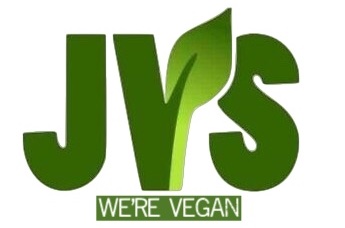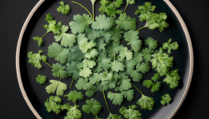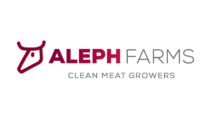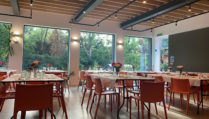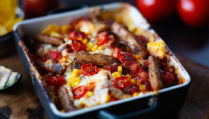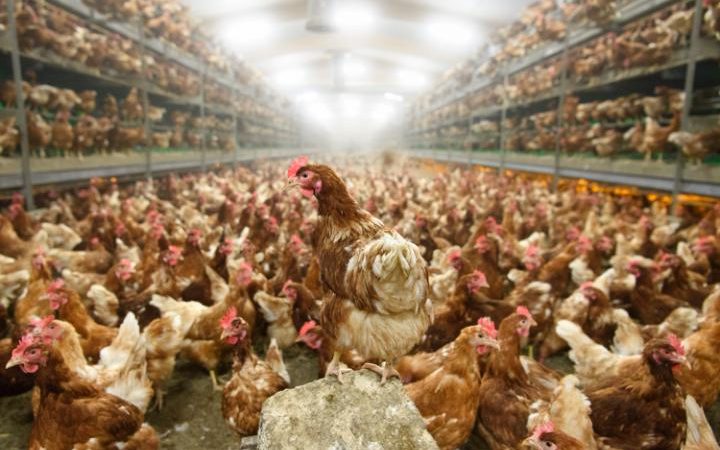It is that time of year when boxes of eggs are piled high in Jewish homes, in readiness for a frenzy of Pesach cooking and baking. In getting ready to celebrate the festival of freedom, we ought to give some thought to the way these eggs are produced.
Today’s industrial processes bear no resemblance to the quaint local farming of yesteryear. This is a $10 billion industry that renders chickens mere commodities, to be disposed of once their production slows.
Hens have a natural life expectancy of five years or more. However, egg-laying hens have their lives cut short at little over a year — to maximise profit. No matter where you buy your eggs — high-end or budget shops — and irrespective of the label on the box — free-range or organic — the hens that lay them are killed at between 68 and 72 weeks.
The fate of male chicks is even worse. They are given no chance at life. Seen as an unwanted by-product, they are routinely killed at just a day old, suffocated in a plastic bag or ground up alive. Germany is the only country that has banned this practice, known as “chicken shredding”.
The idea of eating food that involves thoughtless killing on such an industrial scale is particularly unappetising at the time of year when we reflect upon the killing of the first-born around our Seder tables.
But it is not just the chicks’ deaths that are at odds with Jewish values — their “lives”are pitiful from start to finish. I write the word in inverted commas, because they are not really living, merely existing. They will never see their mothers. Hens have their beaks cut off with a hot blade, without anaesthetic, to prevent them from pecking each other. Tens of thousands of birds are confined to warehouses so cramped they may never spread their wings. Accessing the doors to the outside is a luxury only a few are afforded. For most, fresh air and sunlight is something they can only dream of.
There is often confusion over the real meaning of the labels we see on egg boxes and what they tell us about the way animals are treated.
- “Free-range” eggs are those produced from birds that may be allowed outdoors. The term may be used differently depending on the country and is often not regulated.
- “Organic” refers to the feed given to the hens, who must live in an open space, but that open space can be an overcrowded henhouse.
- The production of battery eggs from caged hens confined for their entire lives was banned in the UK six years ago. Up to 11 hens are crammed into tiny wire cages, which are stacked on top of each other, so urine and faeces drop into the lower cages. Conditions are so bad, some chickens die in their cages and rot, surrounded by live birds. Some British companies (including many household-name kosher shops in Britain) import battery eggs from Europe because they are dirt-cheap.
It is alarming to see kosher shops in the UK choosing to stock battery eggs.
When we reflect so deeply on what it means to be free from oppression at this time of year, we ought to give some thought to the lives these chickens lead.
A growing number of rabbis are arguing a strong case that eating kosher should take account of the ethics of the farming methods involved.
Rabbi Ariel Abel wrote a pertinent piece for the JC (tinyurl.com/jceggs) entitled “We can’t eat eggs from mistreated chickens” — and recently the Jewish Vegetarian Society has collaborated with the charity Jewish Veg, which is based in America, to produce a rabbinic statement (tinyurl.com/ rabbinicstatement) signed by more than 100 rabbis worldwide from various denominations, proposing veganism as the diet most compatible with Judaism.
When baking, use a quarter of a cup (65g) of puréed cooked apple or mashed banana to replace each egg. A simple online search for “replacing eggs in baking” will show you other alternatives and the exact quantities to use. For those who eat kitniot, aquafaba, also known as chickpea water, can be whisked for a few minutes and used like egg whites.
A few years ago, The Jewish Vegetarian Society held a sell-out vegan Seder night at JW3. The dessert was Sheryl Crow’s chocolate mousse recipe, containing ripe avocado, cocoa, vanilla and almond extract — it takes under five minutes to whip up (tinyurl.com/crowmousse). We have lots of tasty, nutritious and easy Pesach recipes online at jvs.org.uk.
When it comes to the Seder plate, a common replacement is a decorative wooden egg. Some people like to use a potato, as its shape mimics that of an egg. You can go further and use a flower — a symbol of spring and new life. I like to use edible flowers — visit the Royal Horticultural Society’s website (tinyurl.com/RHSedibleflowers) for information about the various flavours and how to grow your own.
You need not miss out on cherished favourites this Pesach, when there are so many delicious, compassionate alternatives.
